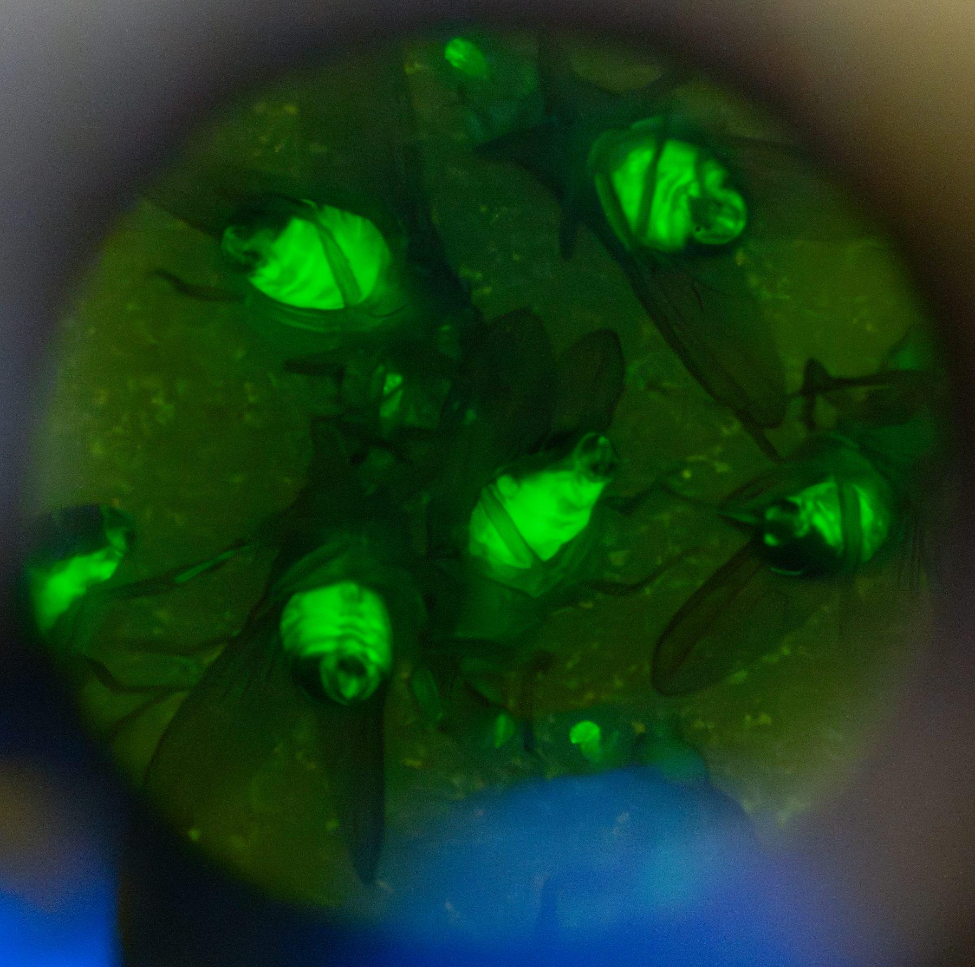The Buzz on Genome Editing
School of Public Health launches novel mosquito lab


Diseases transmitted by mosquitoes such as malaria, Zika, and dengue pose significant global public health concerns. Researchers at UTHealth Houston School of Public Health are responding by launching a novel mosquito vivarium to develop genetic strategies for controlling these diseases.
Victor Lopez del Amo, PhD, assistant professor with the Department of Epidemiology at the school, leads the pioneering research facility working to mitigate the consequences of vector-borne diseases caused by mosquito populations. According to the World Health Organization, vector-borne diseases, which are illnesses transferred from host to host, make up 17% of all infectious diseases in the world, killing 700,000 people per year.
Based on global warming forecasts, temperature and humidity levels are increasing, resulting in an environment that allows mosquitoes to mature and thrive. According to research from the U.S. Environmental Protection Agency, these conditions lead to an increase in the mosquito population. Once found in localized regions of the world, vector-borne diseases such as West Nile virus are quickly spreading to other countries, and in the last year, more mosquito-borne disease cases have emerged in the U.S. in Texas, Maryland, and Florida.
Using CRISPR (clustered regularly interspaced short palindromic repeats), Lopez del Amo’s research is exploring innovative methods of genetic modification by first using flies, the Drosophila melanogaster species and then translating the findings to mosquitoes.
The CRISPR tool works as “genetic scissors” to cut DNA molecules and enable scientists to edit genes more efficiently. This technology has revolutionized genetic modification in CRISPR designs for mosquito control by targeting sex-determination genes to destroy a population.
Lopez del Amo’s research will build off the groundbreaking CRISPR-Cas9 tool, but he is implementing the use of Cas12a nuclease, which has never been used for genome editing within insects. This study marks the first system to be tested in flies, an initial step to opening a new avenue of implementation in mosquito species.
Unlike Cas9, the Cas12a nuclease activity can be fine-tuned by adjusting environmental temperature.
“Novel genetic strategies based on CRISPR, such as the ones we work with, hold great promise for field purposes. These genetic elements, when passed through natural reproduction, would streamline current strategies to control mosquito populations,” Lopez del Amo said.
Two current U.S. strategies to manage mosquito populations include using Wolbachia-infected mosquitoes (insects bred with the Wolbachia bacteria causing offspring not to hatch), and releasing genetically modified mosquitoes. The former method releases Wolbachia-infected mosquitoes into regions populated with the Aedes aegypti species to stop the spread of dengue, Zika, and chikungunya. The latter approach genetically modifies mosquitoes to stop female offspring from surviving to adulthood.
These strategies used to control mosquito populations in the U.S. still leave wide gaps in the field. Lopez del Amo hopes to mitigate disease spread by applying data gained from his current research on flies to mosquito populations.
“The next steps will involve translating these CRISPR methods to mosquitoes and evaluating their efficiencies under safe and strict laboratory conditions. If successful, we could use these methods for real-world applications by managing mosquito populations in the field,” Lopez del Amo said.
View inside content of the mosquito lab here.
